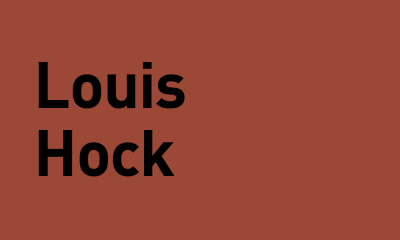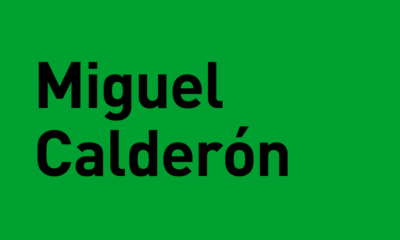Closeup
CLOSEUP Allan Sekula, Dead Letter Office, INSITE97
Born 1951 in Erie, Pennsylvania, Allan Sekula studied at the University of California in San Diego. Photographer, filmmaker and theorist, Sekula was a member of the Editorial Board of the journal October since the mid-80s; his books include ‘Photography Against the Grain: Essays and Photo Works’ 1973–1983 (1984), ‘Fish Story’ (1995), ‘Dead Letter Office’ (1997), and ‘Titanic's Wake’ (2003) among others. He wrote numerous critical essays on film and photography and their relationship to politics. In his photographs, Allan Sekula analyzed the relationship between quasi-factual image and text; the narrative derived from a reading of related images and the role of text to the image. He received fellowships and grants from the Guggenheim Foundation, National Endowment for the Arts, Getty Research Institute, Deutsche Akademischer Austauschdienst (DAAD), Atelier Calder, and was named a 2007 USA Broad Fellow. In 2015, the Clark Institute acquired the Allan Sekula library comprised of 15,000 volumes, through the generous gift of art historian and professor Sally Stein. In 2017 Allan Sekulas’s archive was transferred to the Getty Research Institute in Los Angeles.
Source: INSITE Archive/ Allan Sekula Studio.
"In the last six or eight years my work has got more and more pictorial in a way, and more about issues that might be related to painting. But at the same time I want to maintain something that is very specific to photography, so I stage nothing, I refuse to stage. Now in photography is very fashionable to stage, and there is an idea that staged photographs are more intelligent because supposedly the artist meditated on the whole process, but in my case is a matter of making really interesting choices. And choices that interest me to be in certain places, and then see what happens, because in some ways everyday life is more interesting and more complex than anything you can possibly stage". –Allan Sekula, INSITE97 (interview).
“In the middle of San Diego and Tijuana, the actual metropolitan zones, with the maquiladoras interested me for example that Hyundai was building cargo containers here. I have a long interest in this economy of traffic of goods worldwide by means of cargo containers, so basically, I looked at the Hyundai maquiladoras, one of the shipyards in Ensenada doing subcontracting work for Hyundai, the set of the Titanic on the coast, because for me the Titanic is the great image of kind a modernist disaster, canneries in Sanzal tuna canneries, which are now starting again with some of the changes in the embargo and lifting the prohibition of tuna caught by Mexican boats, and in some ways what I was looking for was the image of the new assembly line in Mexico, in northern Mexico.” –Allan Sekula, INSITE97, (interview).
“On the American side the image of work is completely suppressed. The only image of work we get in America now is the work is people in hospitals and emergency rooms, and the police, you know these are the favorite forms of work for television and there’s a fantasy of on the US side that work is disappearing, or work goes somewhere else somewhere hidden somewhere in the darkness and of course you can't avoid the fact of work when you cross over to Mexico because people are working so hard for so little at an enormous cost and I wanted to make some record of that and have some respect for the gestures of work. What is time like and how can a still photograph show you something of work without turning work into a kind of spectacle?” –Allan Sekula, INSITE97 (interview).
“In the last six or eight years my work has gotten more and more pictorial in a way and more about issues that might be related to painting, but at the same time I want to maintain something that is very specific to photography so I staged nothing I refuse to stage. Now in photograph is very fashionable to stage and there is an idea that staged photographs are more intelligent because supposedly the artist meditated on the whole process but in my case is a matter of making really interesting choices. And choices that interest me to be in certain places and then see what happens because in some ways everyday life is more interesting and more complex than anything you can possibly stage.” –Allan Sekula, INSITE97 (interview).
“My photographs [were] exhibited on the Mexican side of the line, and constitute a sequel of sorts to Fish Story, particularly to the chapter on Veracruz. It is worth noting that Tijuana is now a major site for the production of cargo containers, a large factory having been built in the industrial district of El Florido by the Korean conglomerate Hyundai following the closure of a smaller factory in the port of Los Angeles.
The written elements of the work may share certain features with science fiction writing or speculative military fiction, such as the novels of Tom Clancy. I am also interested in several novels, travel books, and films about San Diego and Baja California, particularly in the writer Max Miller, whose early 1930s novel ‘I Cover the Waterfront’ was made into a hit film shortly after its publication. Throughout his writing, Miller evokes an earlier metaphysic of the California coast as ‘terra nova’, a metaphysic found, for example, in the 1840s writings of Richard Henry Dana. But for Miller, whose racial views are a big step backward from Dana's, the maritime space of Baja California is a repository of a primeval past that has been lost above the border. One can chart linkages between Miller's texts and certain B-movies about the California coast as a space of melancholic beach-bum indolence on the verge of Cold War geopolitical intrigue, notably Shack out on 101. Those who identify, consciously or not, with the white adventurers who seized the northern part of California from the Mexicans in the 1840s continue to regard the long peninsula of Baja California as a kind of vestigial organ, a primeval, reptilian tail: as a place of escape, drunkenness and dreams. The truth at the end of the twentieth century may be closer to this: the industrialized northern border of Mexico offers an image of a grim Taylorist future. Thus the hand of the slave extends a fun-house mirror to the Janus-face of the pleasure and profit-seeking master.” --Allan Sekula, Published in Camera Austria no. 59-60/1997.
“And then also there are these portraits, because the other thing that I photographed was the Republican Convention in San Diego. Yeah, so these photos are all made from the time of the convention. This man here in maybe the only man able to scavenge on the street at the time of the convention because the San Diego police where busy sweeping all the homeless people away to make the city seem very clean and neat and properly bourgeois. So, I liked him because he’s a kind of ‘mother courage’ figure, you know? Like Bertolt Brecht play Mutter Courage, he’s surviving in this hard situation, and I wanted someone from the US who was kind of in this situation. “ –Allan Sekula, INSITE907 (interview).
“it’s a kind of montage that is done very quickly, very spontaneously, and if you look at all this diptychs, I think they give you kind of a big list of different ways that you can think of two consecutive images to one image following another sometimes the difference is a difference of space, for example here with the image of the Titanic sinking into the dirt, sometimes it’s a matter of time, sometimes a matter of two age and spaces that show social relations, sometimes is a kind of action like here with the docking of a cruise ship it’s kind of a sports photograph, you know? it's like sports photography.” – Allan Sekula, INSITE97 (interview).







